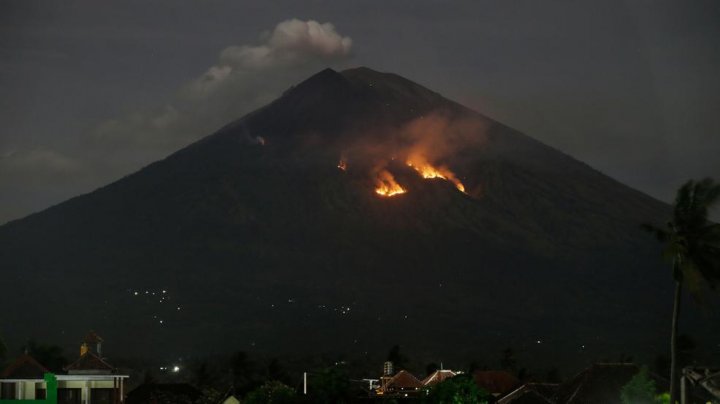Bali volcano hurls lava and ash, hundreds evacuated
 foto: PUBLIKA.MD
foto: PUBLIKA.MD
The Mount Agung volcano on the Indonesian tourist island of Bali erupted on Monday evening, ejecting a 2,000-metre-high (6,560-foot-high) column of thick ash and hurling lava down its slopes.
The Indonesian geological agency's Agung monitoring post said explosions from the mountain began just after 9 p.m. and lasted more than seven minutes.
"Flares of incandescent lava" reached 2 kilometres (1.2 miles) from the crater, it said, setting fire to forests at high elevation on the mountain.
Volcanologist Devy Kamil Syahbana said the volcano remained unstable and that there was a possibility of more eruptions and tremors.
Nearly 700 people fled Banjar Galih village, about 6 kilometres (3.7 miles) from the crater, to an evacuation centre, according to one resident.
It was the volcano's first explosive eruption since a dramatic increase in activity last year that temporarily forced the evacuation of tens of thousands of people.
The alert status for Agung has not been raised from its current second-highest level and the exclusion zone around the crater remains at 4 kilometres (2.5 miles).
The volcano was periodically erupting ash on Tuesday, which was drifting west.
The island's airport, to the south, was still operating normally.
Bali's international airport closed for half a day on Friday because of volcanic ash from Agung, disrupting travel for tens of thousands.
The island is set to host World Bank and International Monetary Fund meetings in October.
The volcano, about 70 kilometres (45 miles) northeast of Bali's tourist hotspot of Kuta, last had a major eruption in 1963, killing about 1,100 people.
Authorities lowered its alert status from the highest level in February after seismic activity quietened.
Indonesia, an archipelago of more than 250 million people, sits on the Pacific "Ring of Fire" and is prone to earthquakes and volcanic eruptions.
Government seismologists monitor more than 120 active volcanoes.